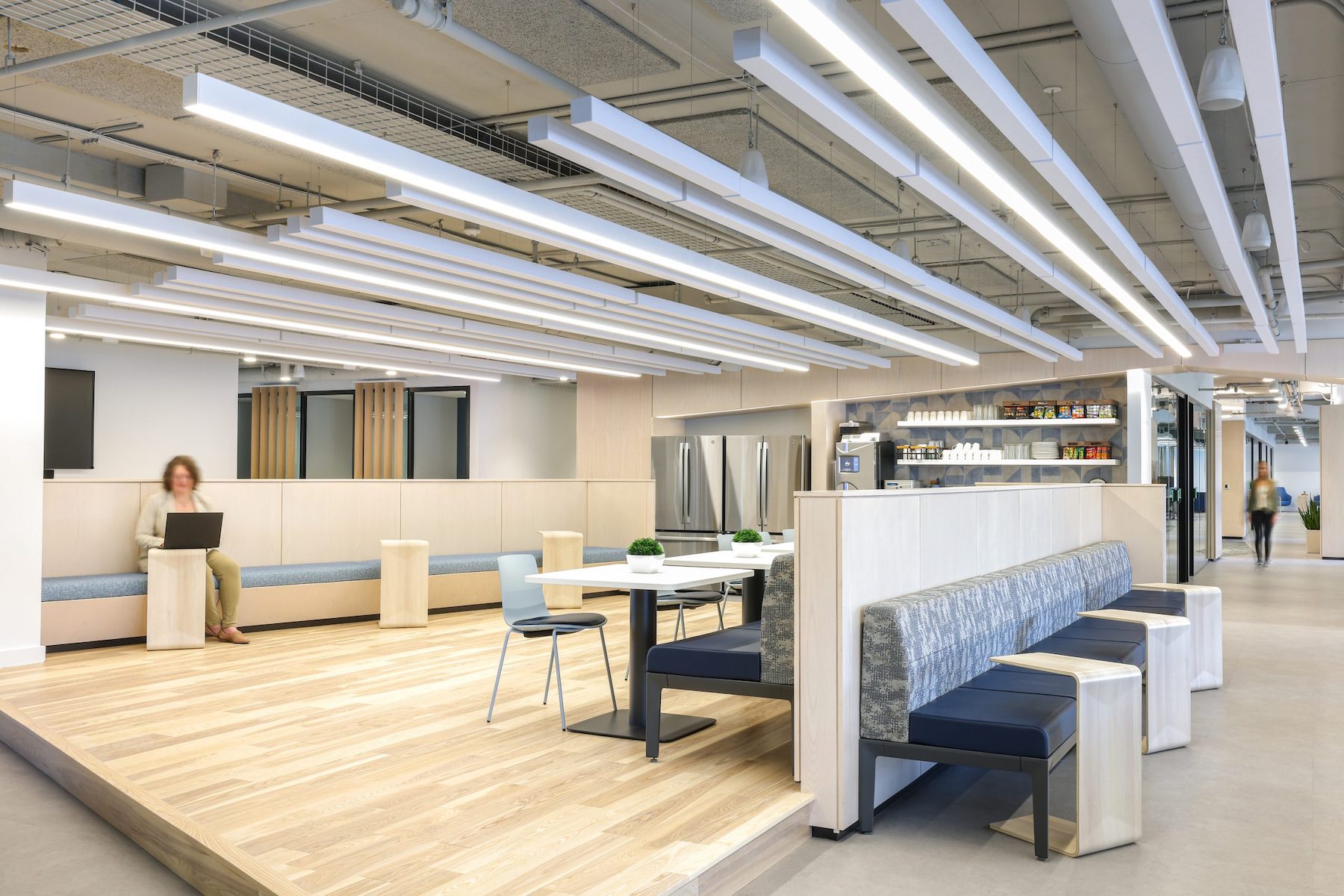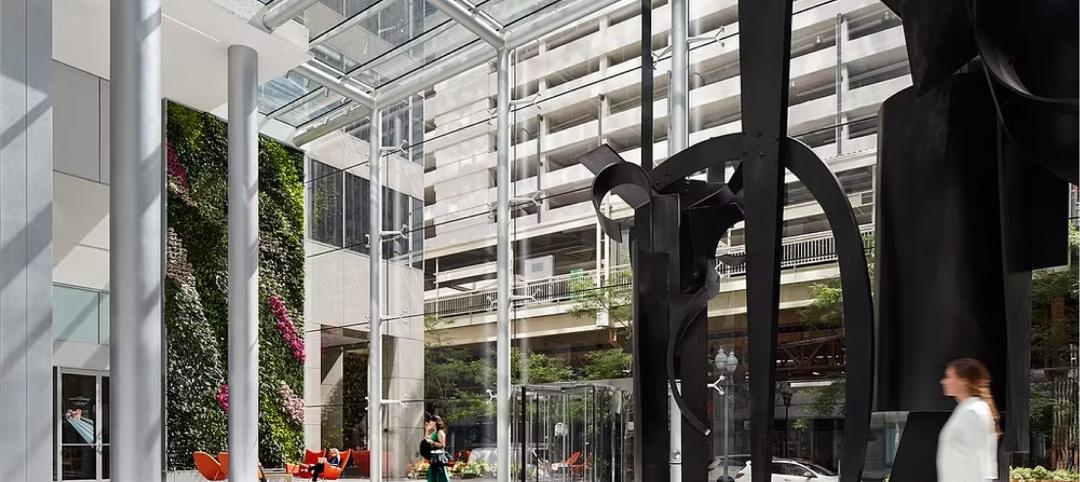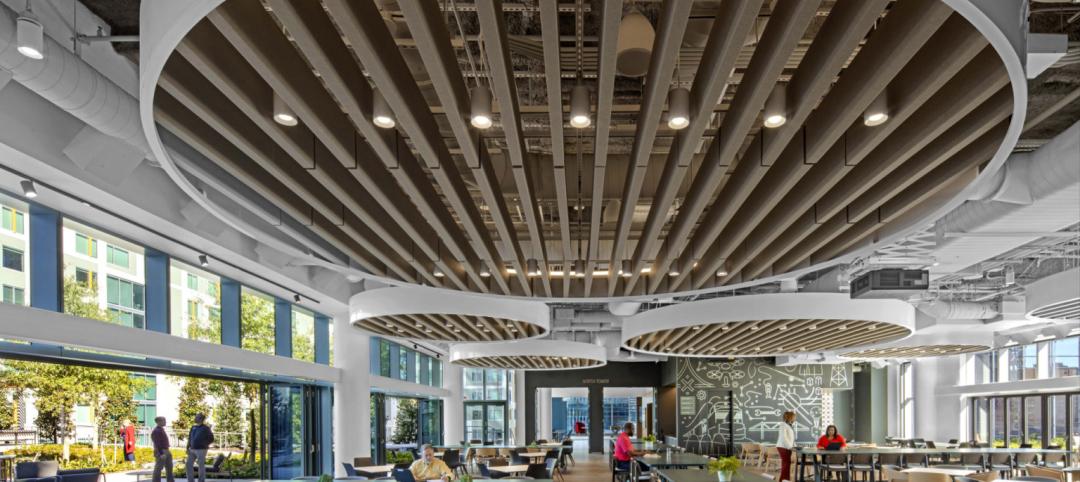Princeton, New Jersey, which can trace its past to a settlement established in 1675, is now a borough with 30,000 residents that has managed to maintain its walkable, small-town historic feel while continuing to grow and upgrade with construction and infrastructure improvements.
Recent projects have included the American Campus Communities-developed Meadows Graduate Housing complex serving Princeton University, whose Building Team was led by the engineering firm Thornton Tomasetti, the design firm Mithun, and CM Hunter Roberts. The 329,000-sf, three-building project, located in the suburb of West Windsor, has 379 units that are Passive House-designed and will use district geothermal-exchange for heating and cooling. This project is part of the university’s broader goal to be net-zero carbon emissions by 2046.
The university continues apace on its new Art Museum, designed by the architect David Adjaye. The 145,000-sf building, located in Princeton’s downtown, is scheduled to open by early 2025. LF Driscoll has been leading the construction of the nine-pavilion museum, which will have 300 percent more educational space and 65 percent more exhibit space than the facility it is replacing. (The original museum was built in 1923.)
Designed with a ‘neighborhood’ concept

Sweetwater Construction Corp. recently wrapped up construction on another downtown project: the new office location for Amicus Therapeutics, a patent-dedicated biotech company that develops medicines for rare diseases.
This 27,200-sf space, for which Ware Malcomb provided interior architecture and design services, encompasses the fourth and fifth floors of the five-story, 71,500-sf Class A office building at 47 Hulfish Street, which was built in 1985.
This space will serve as Amicus’ global headquarters. The office is open, contemporary, and designed with a neighborhood concept. A common core promotes connectivity between the flexible office areas that surround it. The office features large angled baffled designs with integrated lighting that is strategically deployed as acoustical elements.
“We focused on creating a space that built upon Princeton’s community feel, as well as addressing Amicus’ desire for flexible workspaces and convenient amenities,” said Marlyn Zucosky, Ware Malcolm’s Regional Director, in a prepared statement. She added that the interior design focuses on “creating a sense of belonging and inspiration.”

Graphics convey the patient’s journey
Enclosed meeting rooms within Amicus’ new space double as offices, and larger meeting rooms have movable walls to provide flexibility. Ceilings were extended beyond enclosed spaces to the adjacent collaboration areas, which maximized square footage usage and created a sense of openness and unity.
The project team incorporated branded storytelling graphics into the boardroom area, unassigned mobile workstations and collaboration areas. The branding and graphic elements highlight the patient’s journey and underscore the interconnectedness between corporate objectives and the human element. The entire space also integrates elements of biophilia and neurodiversity, along with sustainable practices to enhance connectivity to nature and contribute to a healthier indoor environment.
Related Stories
Headquarters | May 16, 2023
Workplace HQ for party clothing company Shinesty celebrates its bold, whimsical products
The new Denver headquarters for Shinesty, a party clothing company, was designed to match the brand’s fun image with an iconic array of colors, textures, and prints curated by the design agency, Maximalist. Shinesty’s mission, to challenge the world to live more freely and “take itself less seriously,” is embodied throughout the office interior.
Headquarters | May 15, 2023
The new definition of Class A property
Dan Cheetham, Managing Director and Founder of FYOOG, believes organizations returning to a "hub and spoke" model could have a profound effect on properties once considered Class B.
Headquarters | May 9, 2023
New Wells Fargo development in Texas will be bank’s first net-positive campus
A new Wells Fargo development in the Dallas metroplex will be the national bank’s first net-positive campus, expected to generate more energy than it uses. The 850,000-sf project on 22 acres will generate power from solar panels and provide electric vehicle charging stations.
Office Buildings | May 5, 2023
9 workplace design trends for 2023
HOK Director of WorkPlace Kay Sargent and Director of Interiors Tom Polucci discuss the trends shaping office design in 2023.
Design Innovation Report | Apr 27, 2023
BD+C's 2023 Design Innovation Report
Building Design+Construction’s Design Innovation Report presents projects, spaces, and initiatives—and the AEC professionals behind them—that push the boundaries of building design. This year, we feature four novel projects and one building science innovation.
Office Buildings | Apr 24, 2023
Smart savings: Commissioning for the hybrid workplace
Joe Crowe, Senior Mechanical Engineer, Gresham Smith, shares smart savings tips for facility managers and building owners of hybrid workplaces.
Design Innovation Report | Apr 19, 2023
Reinforced concrete walls and fins stiffen and shade the National Bank of Kuwait skyscraper
When the National Bank of Kuwait first conceived its new headquarters more than a decade ago, it wanted to make a statement about passive design with a soaring tower that could withstand the extreme heat of Kuwait City, the country’s desert capital.
Office Buildings | Apr 13, 2023
L.A. headquarters for startup Califia Farms incorporates post-pandemic hybrid workplace design concepts
The new Los Angeles headquarters for fast-growing Califia Farms, a brand of dairy alternative products, was designed by SLAM with the post-Covid hybrid work environment in mind. Located in Maxwell Coffee House, a historic production facility built in 1924 that has become a vibrant mixed-use complex, the office features a café bordered by generous meeting rooms.
Architects | Apr 6, 2023
New tool from Perkins&Will will make public health data more accessible to designers and architects
Called PRECEDE, the dashboard is an open-source tool developed by Perkins&Will that draws on federal data to identify and assess community health priorities within the U.S. by location. The firm was recently awarded a $30,000 ASID Foundation Grant to enhance the tool.
Government Buildings | Mar 24, 2023
19 federal buildings named GSA Design Awards winners
After a six-year hiatus, the U.S. General Services Administration late last year resumed its esteemed GSA Design Awards program. In all, 19 federal building projects nationwide were honored with 2022 GSA Design Awards, eight with Honor Awards and 11 with Citations.

















